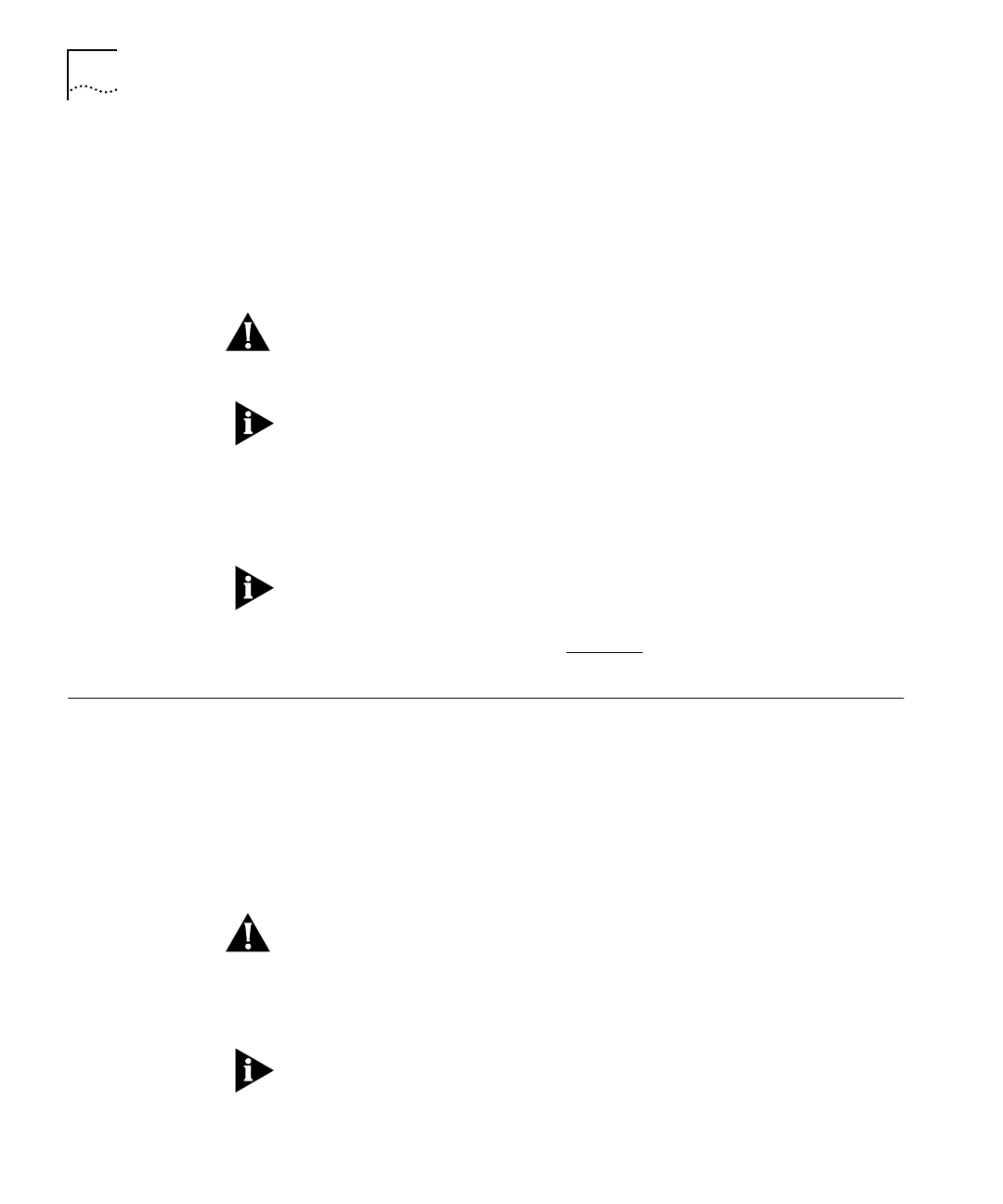
DUA1640-5AAA02
3-12
C
HAPTER
3: U
SING
THE
PS H
UB
Using Transceiver
Modules
Depending on your hub, the PS Hub has one or two transceiver module
slots, providing a choice of media options.
PS Hub 40
The PS Hub 40 has two 10Mbps transceiver module slots that can be
fitted with 3Com 10Mbps transceiver modules.
CAUTION: The only transceiver modules that can be used in the
PS Hub 40 unit’s transceiver module slots are 3Com 10Mbps transceiver
modules.
You cannot use two AUI Transceiver Modules or Bridge MicroModules
at the same time.
PS Hub 50
The PS Hub 50 has one transceiver module slot that can be fitted with
a 3Com 10Mbps or 100Mbps transceiver module.
You cannot use an AUI Transceiver Module or Bridge MicroModule.
The operation of the transceiver module in the PS Hub 50 is
determined by the type of transceiver module you use; refer to “PS Hub
50 Transceiver Module Slot” on
page 2-6
.
Connecting
PS Hubs Together
(Stacking)
You can increase the number of ports in your network by connecting
additional PS Hub 40 and PS Hub 50 units to your hub, to form a
stack
(this process is called
stacking
). The four cascaded segments are carried
through the stack, enabling you to switch the ports on all of the hubs
between the four segments.
You can stack up to 10 units (if they are rack mounted) or six units
(if they are free standing).
CAUTION: Do not have a free standing stack of more than six hubs.
When you connect workstations and other equipment to the stack,
ensure that all cables are supported and cannot pull the stack over.
If installing the PS Hub in a stack of mixed SuperStack II units, the
PS Hub must be installed above the deeper units.
For conformance with Ethernet rules, you can only have four repeaters
in series. For a stack of more than one PS Hub, any path through the
stack counts as going through two logical repeaters.


















